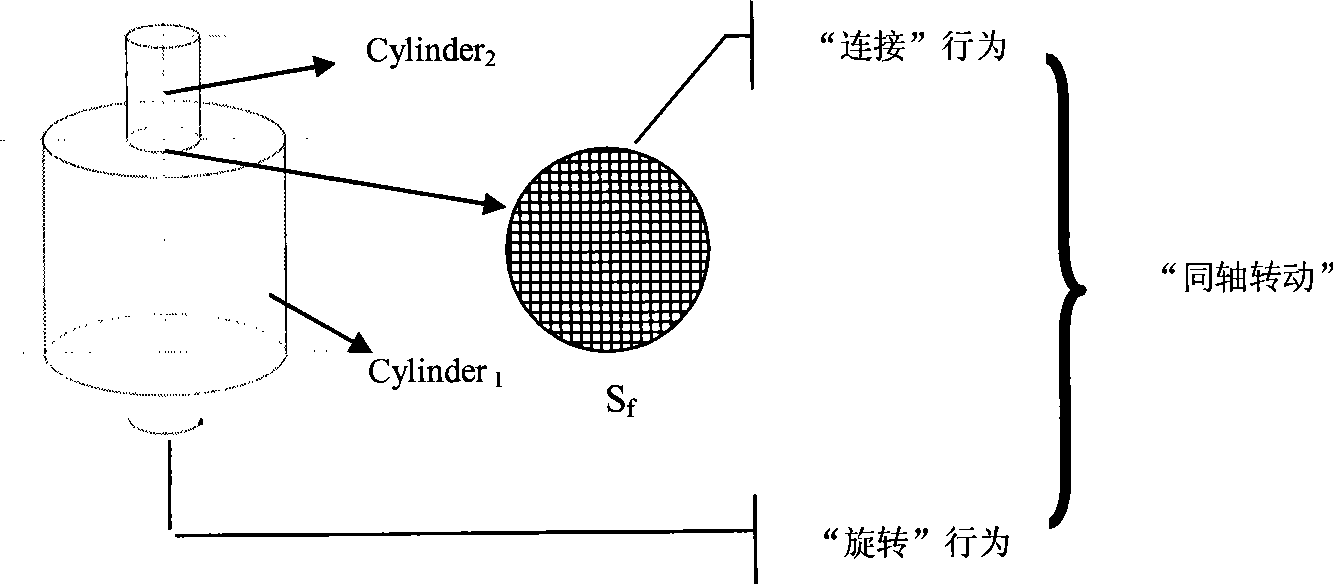Product gene modelling approach based on behavior semantic network identity model
A semantic network and knowledge model technology, applied in the field of product gene modeling based on behavioral semantic network knowledge model, can solve problems such as the design theory system has not been established
- Summary
- Abstract
- Description
- Claims
- Application Information
AI Technical Summary
Problems solved by technology
Method used
Image
Examples
Embodiment Construction
[0025] The product gene modeling method based on the behavioral semantic network knowledge model includes the following steps: 1) Establishing the behavioral semantic model of the product; 2) Establishing the mapping criteria between the product’s behavioral semantics The mapping criterion of semantic predicates establishes the description frame scheme of the functional and geometric features of the product; 4) transforms the description framework scheme described in step 3 into the corresponding gene code by applying evolutionary design and gene coding technology, and establishes the functional gene model of the product.
[0026] Wherein, the behavior semantic model adopts a three-dimensional DOF Cartesian coordinate system, and its three DOF direction axes are respectively: normal axis, horizontal axis and longitudinal axis; the behavior semantic predicate has eight in total, which are respectively : Occlusion, connection, translation, rotation, fixed position, coverage, asse...
PUM
 Login to View More
Login to View More Abstract
Description
Claims
Application Information
 Login to View More
Login to View More - R&D
- Intellectual Property
- Life Sciences
- Materials
- Tech Scout
- Unparalleled Data Quality
- Higher Quality Content
- 60% Fewer Hallucinations
Browse by: Latest US Patents, China's latest patents, Technical Efficacy Thesaurus, Application Domain, Technology Topic, Popular Technical Reports.
© 2025 PatSnap. All rights reserved.Legal|Privacy policy|Modern Slavery Act Transparency Statement|Sitemap|About US| Contact US: help@patsnap.com



